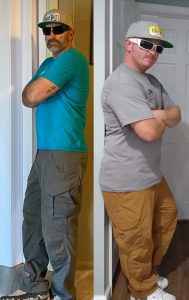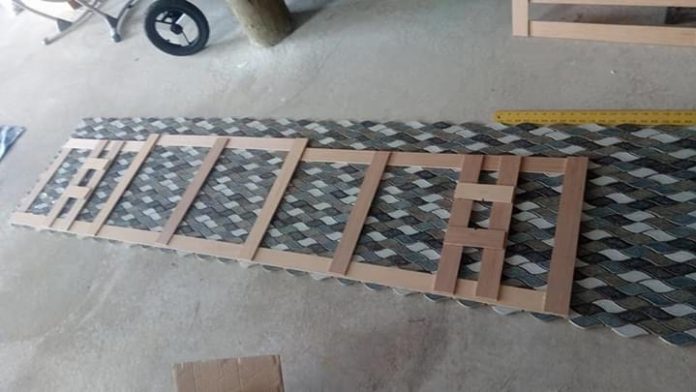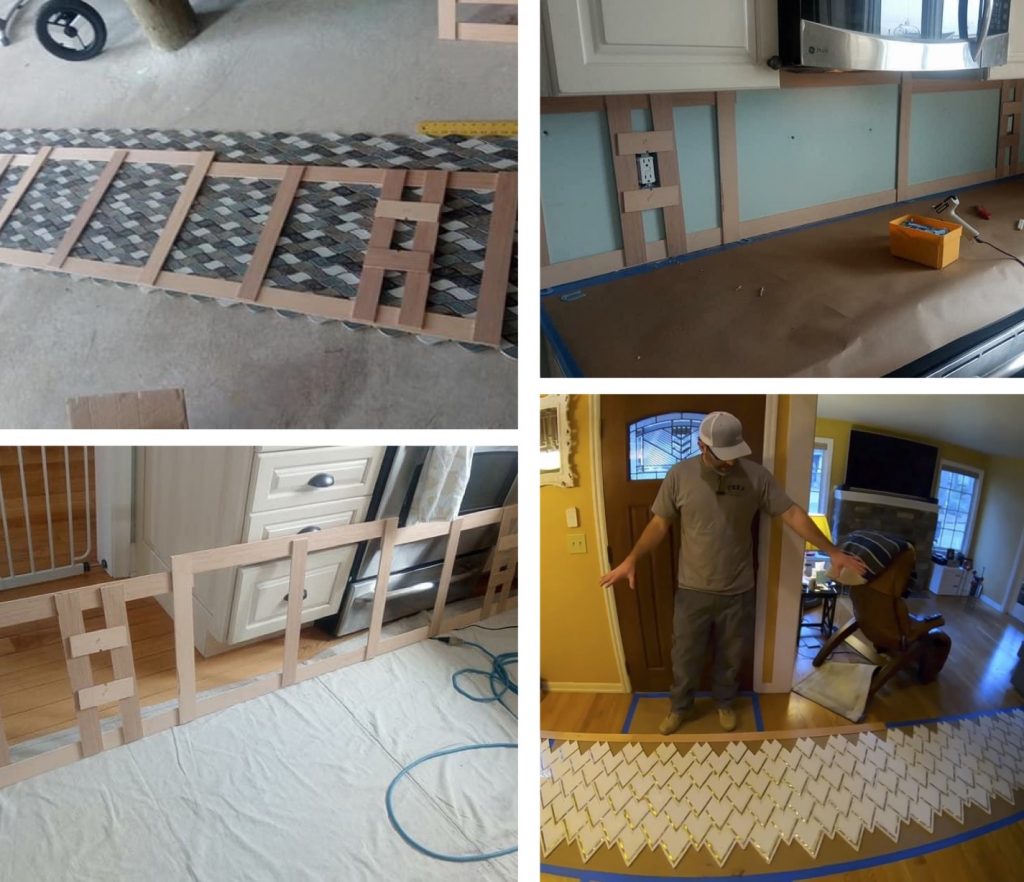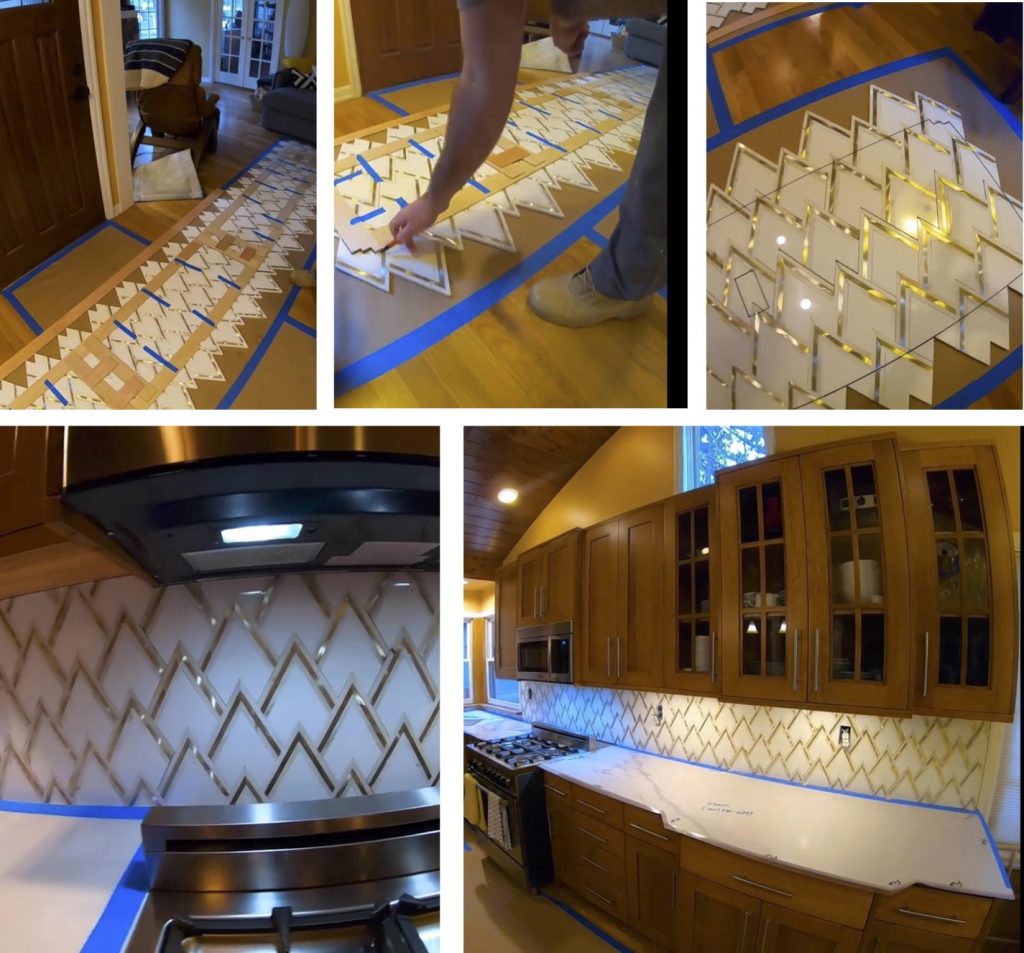

Templating is often thought of as a technique only used by solid surface fabricators in the construction of kitchen countertops, and other slab stone installations. But tile installers are starting to use some of these same skills to ease the installation process of large panel gauged porcelain tile panels (GPTP), and other intricate mosaic pattern tile installations.
To research this new
trend, I went from one end of the country to the other, finding two well-known NTCA members who employ templating in their businesses. On the East Coast, out of the Garden State of New Jersey, I reached out to Ken Ballin of Skyro Floors. At the other end of the country, in Portland, Ore., Jason McDaniel of Stoneman Construction LLC. Both have a considerable amount of experience with templating. Since they live in different parts of the country and service different markets, they described how templating is used in both. I found it to be an interesting topic and had several questions for each of them.
Describe the general idea, and process of templating.
Ken: The template is used to recreate the space you are getting ready to tile. After creating your template, you lay out the tile on the floor and lay the template over the tile, tracing around the template to mark all of your cuts before the installation starts.
Jason: You are creating a physical map of an area when you template. It works great in this day and age, because of all the unique patterns in tile and all the different types of tile that are out there.
What materials do you use for your templates? And, where do you get them?
Ken: I like to rip Luan (also spelled Luaun) into 2” strips. It’s easy to find here at most lumber yards and big box stores. It’s somewhat durable and can be used over and over again.
Jason: I use Luan (strips of wood). I would tell any installer to go to a cabinet or stone fab shop to find some. There is a white plastic out there that looks like cardboard that works too, and comes in big panels of 4” x 8” that you can cut down to 3” strips.
On what projects is templating a good choice? Describe a project you wouldn’t do without a template.
Ken: Templating is great for installation of irregular-shaped tiles, or in irregular-shaped spaces. They work well anywhere precision is required, and measurements are difficult to take. My mind works a lot better visually than with measurements.
Jason: The 10th floor of a high rise in an apartment complex where you don’t want to carry saws and all of the other things needed to create the floor. Take the template back to the shop, overlay the tile, and trace the outline of the template on the tile. You can cut it and have it ready to take back to the jobsite and put in place. Any time I scribe I use a template.
Is templating a good idea because it saves time? Or because it gives a better finished product?
Ken: I don’t know that templating always saves time, but for me it’s a way to be more precise without driving myself crazy trying to measure individual pieces. We all think differently, so it is important to do what works best for you.
Jason: It does both; it allows you to know your path. One of the things people often ask is how am I so efficient with my time. If you have a contest and the race is to create a herringbone backsplash, I’d be faster using a template.
Describe your first experience with templating a tile installation, so our readers might know what to expect.
Ken: My first time templating a tile installation was an irregular-shaped bathroom floor going into a curbless shower with a small porcelain plank tile on a herringbone pattern. I got super lucky because somehow during the installation process the layout got tweaked and all my smaller cut pieces around the perimeter were eliminated. It came out fantastic, but to this day, I don’t know what I goofed up on. I don’t mind being lucky every now and then though.
Jason: It was 1” by 1/2” mosaic Carrara herringbone backsplash in a laundry room. It had multiple return walls and a window and wall plates. I remember looking at this space and saying, “I don’t want to be here, I’d much rather be in my boat, so how can I get this done fast?! I bet if I laid this out on the master bathroom floor and templated the space, overlaid it, traced it and cut it, then I could do it all very quickly.” I remember people saying “Wow! How did you do this so fast?”
What are some common pitfalls of templating?
Ken: Templating can be like building a piece of furniture in a room in which that furniture is going to stay. Make sure you can get it out of the room you created it in if you need to! Wood templates only bend so much before the glue gives. Sometimes I’ll make a few smaller templates and butt them together so they are easier to move around.
Jason: One of the most important things to remember is to remove your line from the tile when you trace a template. Another pitfall is not leaving room for expansion. It’s not talked about enough. You have to realize that when you install your tile, the installation is going to grow on you, and you need to account for that. While templating, it can be easy to lose your place on the wall. Sometimes putting indicator lines on the wall and on the template helps, to keep your place. It’s like mile markers.
Explain the benefits of templating on establishing your layout in an installation.
Ken: Templating allows you to lay out your tile and move your template around to avoid small cuts. You can get an idea visually of the total install before you even make a single cut. For people like me who are very visual, it’s a game changer, a great addition to your installation arsenal. You won’t use it every day but when you need it, it’ll make your day a lot easier.
Jason: Templating makes it easier for an installer to lay out a space. If you are doing a unique pattern, it can be hard to find center and using a template allows you to shift the template in any direction to get a visual. Templating allows you to know what is coming 20’ away. It’s a road map of what we are going to create. Sometimes you are running blind in tile, and a template allows you to see the future. It shows you where you are going, and we all want to know where we are going. We don’t want to go blind into anything.
Thank you, Ken and Jason, for sharing your insight on this great tool of templating, I’m sure this information can equip many of our members for challenging projects in the future. Until next time stay safe, and hopefully I will see you on the road.
the tile in the project


Robb Roderick
Robb Roderick has been in the tile industry for nearly 25 years. He has worked with homeowners, builders, architects, and interior design professionals on projects in both residential and commercial settings. Prior to coming onboard with NTCA, Roderick was a member of the association for several years and is a CTEF Certified Tile Installer. He graduated from Missouri State university in 2000 and has also served in the United States Army as a medic. Roderick tours the country bringing NTCA Workshops and CTEF Educational Programs to local audiences nationwide.









